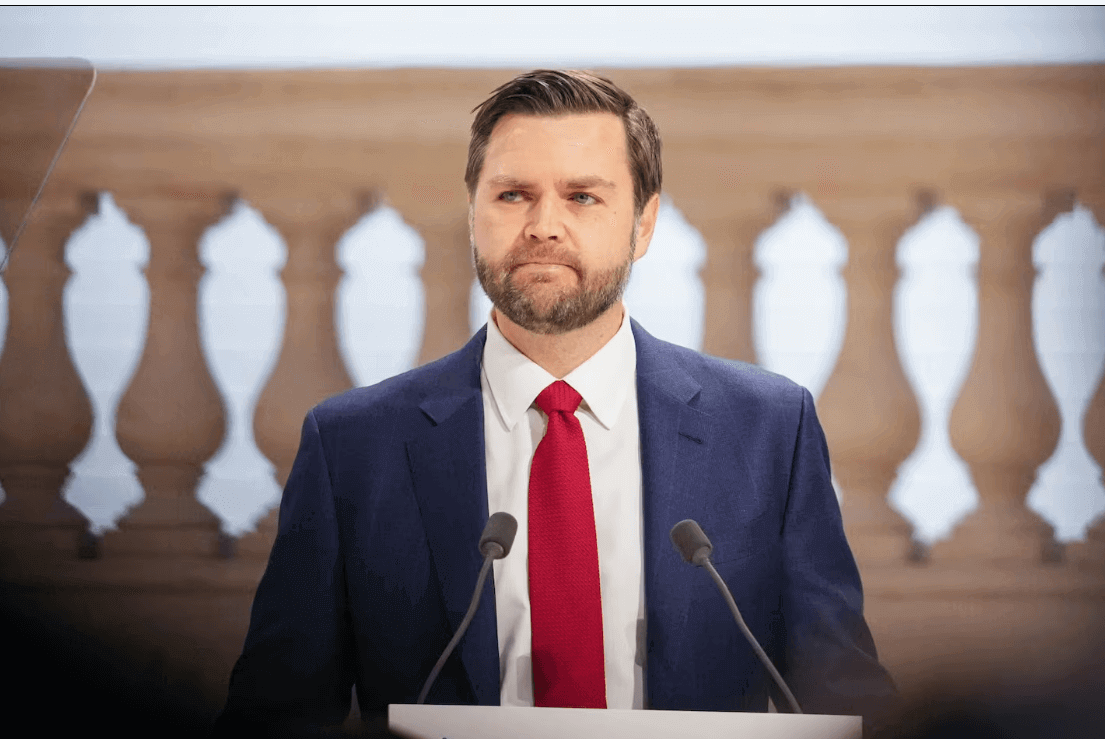这是特朗普政府迄今为止最重要的一次演讲 但特朗普并没有发表演讲

【中美创新时报周2025 年 2 月 15 日编译讯】(记者温友平编译)周二,在巴黎,副总统万斯(JD Vance)在人工智能峰会上发表了演讲,该峰会在美国和国外基本上没有引起关注。鉴于目前新闻泛滥,这是可以理解的。但它不应该被忽视。事实上,它应该被重新审视。《波士顿环球报》记者詹姆斯·平德尔对此作了下述报道。
2016 年 4 月,唐纳德·特朗普发表了一次外交政策演讲,他在演讲中引入了“美国优先”这一概念。然而,自那以后,它在现实世界中的执行一直模糊不清。
在某些情况下,“美国优先”只是意味着美国会做任何国家都会自然而然做的事情——与其他国家建立联盟来遏制竞争对手。这并不是一种新颖的方法。
在其他情况下,“美国优先”的定义更多地是它以前没有的东西——即自愿参与联合国和北约等二战后机构。
特朗普曾经完全放弃了“美国优先”。特朗普下令对叙利亚实施空袭,以回应叙利亚领导人巴沙尔·阿萨德对包括儿童在内的本国公民发动化学袭击。无论这一决定是对是错,它都直接违背了特朗普此前坚持美国不会充当“世界警察”的立场。
即使在今天,这一原则的应用也前后矛盾。例如,特朗普认为美国不应该参与帮助乌克兰抵御俄罗斯入侵,但他支持向以色列提供击退哈马斯(或者伊朗)所需的一切。
所有这些都为本周发生的事情奠定了基础:花了近九年时间——以及其他人——才清楚地阐明了美国优先在当前和未来塑造世界的指导原则上在理论和实践上的实际意义。
周二,在巴黎,副总统 JD Vance 在人工智能峰会上发表了演讲,该峰会在美国和国外基本上没有引起关注。鉴于目前新闻泛滥,这是可以理解的。
但它不应该被忽视。事实上,它应该被重新审视。
这是万斯作为副总统在外国发表的第一次演讲。这次会议由法国和印度主办,汇集了各国元首、顶级科技高管和商界领袖,讨论如何最好地管理和开发人工智能。
万斯对这场讨论不感兴趣。
但至关重要的是,他并没有仅仅利用这 15 分钟的演讲对世界——尤其是欧洲——进行直言不讳的攻击——特朗普 1.0 政府可能会这样做。
相反,万斯还提出了相反的观点。他声称美国是人工智能领域的世界领先者,政府致力于保持这一地位。虽然许多观众专注于为人工智能设置护栏,但特朗普政府打算采取相反的做法。
“我今天早上来这里不是为了谈论人工智能安全,几年前这是会议的主题。我来这里是为了谈论人工智能的机会,”万斯宣称。
根据万斯的说法,特朗普的世界观是,监管会锁定现有参与者,并扼杀新创业公司的出现。他还表示,政府将努力确保美国的人工智能不受意识形态偏见的影响,并专注于改善美国工人的生活。
万斯强调,美国欢迎其他国家采取同样的做法,并警告不要与中国合作——尽管他避免提及中国的名字。
以下是美国优先的有趣台词:“我们邀请你们的国家与我们合作,并效仿[特朗普的]模式,如果这对你们的国家有意义的话。”
结论很明显:美国不会强迫或向其他国家妥协。它只会主宰这个领域。
当然,正如迈克·彭斯曾经警告的那样,没有人代表特朗普说话——甚至他的副总统也不行。但万斯的演讲标志着第一次有一位与总统关系密切的掌权人士阐述了美国优先的立场及其塑造世界的愿景。
然后,在发表完讲话后,万斯完美地表达了自己的观点:他立即离开了。他认为辩论美国会做什么或听取世界的反应毫无意义。
然后,除了美国和英国之外,每个国家都签署了一份承诺共同合作的文件。
题图:JD Vance 摄影师:Nathan Laine/BloombergNathan Laine/摄影师:Nathan Laine/Bloom
附原英文报道:
It was the most important speech of the Trump administration so far. And Trump didn’t deliver it. (Nor did Musk.)
By James Pindell Globe Staff,Updated February 15, 2025
JD Vance Photographer: Nathan Laine/BloombergNathan Laine/Photographer: Nathan Laine/Bloom
In April 2016, Donald Trump gave a foreign policy speech in which he introduced the phrase “America First” as a concept. However, its execution in real-world terms has remained nebulous ever since.
In some cases, America First simply meant that America would do what any nation would naturally do — build coalitions with other nations to contain rivals. That’s hardly a novel approach.
In other cases, America First was defined more by what it was not before — namely, a willing participant in post-World War II institutions like the United Nations and NATO.
Trump once abandoned America First entirely. That happened when he ordered airstrikes on Syria in response to its leader, Bashar al-Assad, launching a chemical attack on his own citizens, including children. Whether that decision was right or wrong, it directly contradicted Trump’s prior insistence that the US would not act as the “world’s policeman.”
Its application has also been inconsistent even today. For example, Trump believes that the United States should have no involvement in helping Ukraine defend itself against a Russian invasion, yet he supports giving Israel whatever it needs to repel Hamas — or, for that matter, Iran.
All of this sets the stage for what happened this week: It took nearly nine years — and someone else — to clearly articulate what America First actually means, both theoretically and practically, in the present moment and as a guiding principle for the future to shape the world.
On Tuesday in Paris, Vice President JD Vance delivered a speech at an AI summit that largely flew under the radar in the US and abroad. Given the current flood of news, that’s understandable.
But it shouldn’t be overlooked. In fact, it should be revisited.
It was Vance’s first speech on foreign soil as vice president. The conference, hosted by France and India, brought together heads of state, top tech executives, and business leaders to discuss how best to manage and develop AI.
Vance had no interest in that discussion.
But, crucially, he also didn’t just use his 15-minute speech to deliver a blunt-force attack on the world — especially Europe — something the Trump 1.0 administration might have done.
Instead, Vance also laid out an opposing vision. He asserted that America is the world leader in AI and that the administration is committed to keeping it that way. While many in the audience were focused on setting guardrails around AI, the Trump administration intends to take the opposite approach.
“I’m not here this morning to talk about AI safety, which was the title of the conference a couple of years ago. I’m here to talk about AI opportunity,” Vance declared.
According to Vance, the Trump worldview is that regulation locks in existing players and stifles the emergence of new startups. He also stated that the administration would work to ensure AI in America remains free from ideological bias and focused on improving the lives of American workers.
Vance emphasized that America welcomes other nations taking the same approach and warned against partnering with China — though he avoided mentioning the country by name.
Here was the interesting America First line: “We invite your countries to work with us and to follow [Trump’s] model if it makes sense for your nations.”
The takeaway was clear: America isn’t going to coerce or compromise with other nations. It’s simply going to dominate the space.
Of course, as Mike Pence once warned, no one speaks for Trump — not even his vice president. But Vance’s speech marked the first time someone in a position of power close to the president had articulated a vision of what America First stands for and how it aims to shape the world.
Then, after delivering his remarks, Vance did something perfectly on message: He immediately left. He saw no point in debating what America would do or listening to the world’s reaction.
Every country then signed a document pledging to work together, except the United States and the United Kingdom.

